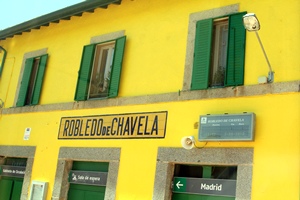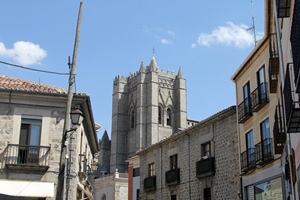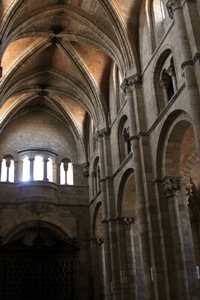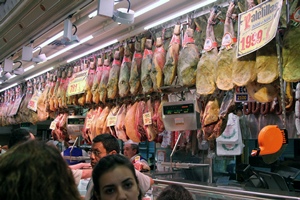We arrived in Ávila following a 90-minute train ride from Madrid’s Chamartín station.
At 3665 feet above sea level, Ávila is the highest provincial capital in Spain, and we found it somewhat cooler than Madrid, though still warm. The train station in Ávila is well outside the city wall, and we took a bus (both the #1 and #4 buses connect the station to the old town) to get to the tourist attractions. We were dropped off near the San Vicente Basilica just outside the wall. The main things we wanted to see were inside the wall, so we planned on visiting the San Vicente church later, if we had time.
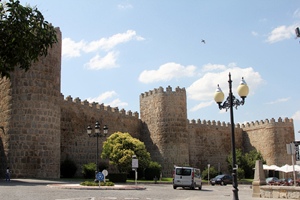
City Wall with Plaza de San Vicente Med Lrg Xlg |
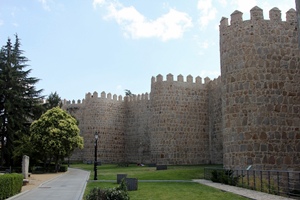
City Wall with Parque de San Vicente Med Lrg Xlg |
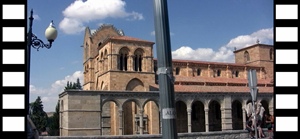
Basilica de San Vicente and City Wall MP4-Sml MP4-Med WMV-HD |
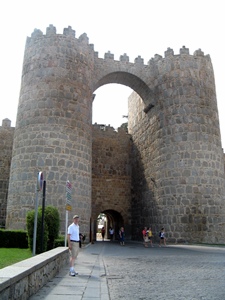
Bob with Puerta de San Vicente Med Lrg |
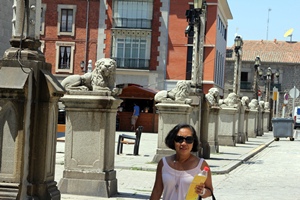
Nella and Plaza Catedral Med Lrg Xlg |
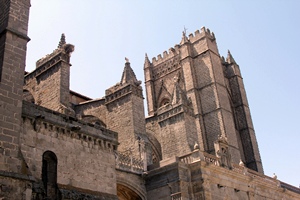
Ávila Cathedral Med Lrg Xlg |
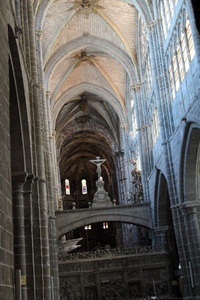
Catheral Interior Med Lrg Xlg |
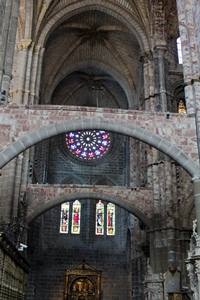
Vaulting, Stained Glass, Internal Buttressing Med Lrg Xlg |
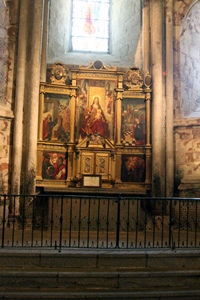
Altarpiece Med Lrg Xlg |
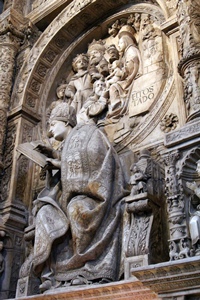
Sepulcro del Tostado Med Lrg Xlg |
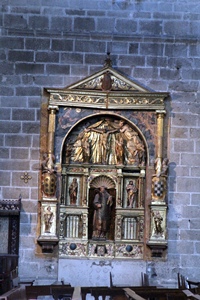
Another Altarpiece Med Lrg Xlg |
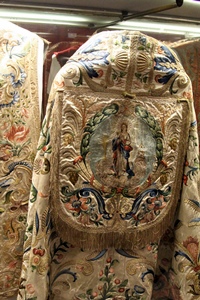
Vestments Med Lrg Xlg |
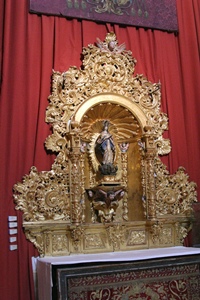
Small Altarpiece Med Lrg Xlg |
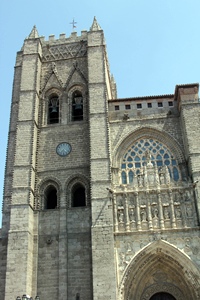
West Face of Cathedral Med Lrg Xlg |
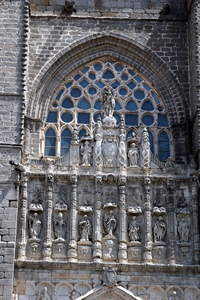
Window and Carvings Med Lrg Xlg |
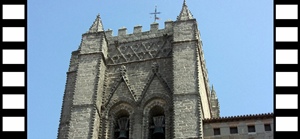
Nella and Cathedral MP4-Sml MP4-Med WMV-HD |
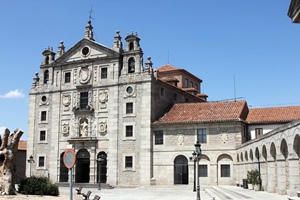
South Face of Convent Church Med Lrg Xlg |
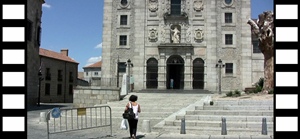
Nella and Convent Church MP4-Sml MP4-Med WMV-HD |
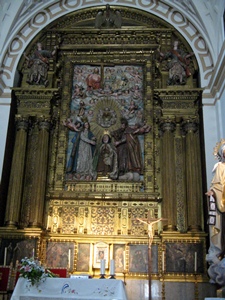
Main Altar, Convent Church Med Lrg |
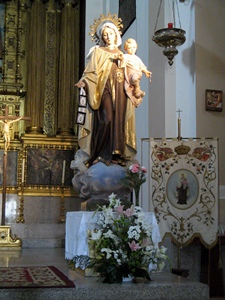
Figures of Virgin and Child Med Lrg |
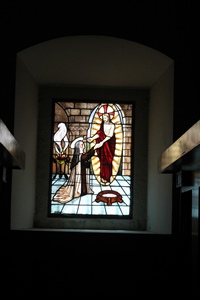
Stained Glass Med Lrg Xlg |
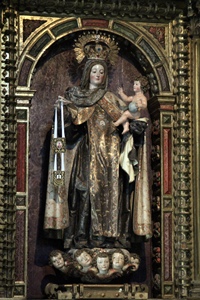
Small Altarpiece Med Lrg Xlg |
From St. Teresa’s convent we headed back toward the cathedral using a different route, which turned out to be spookily deserted.
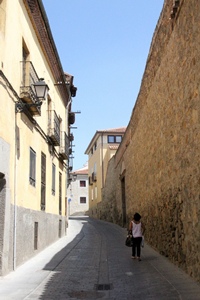
Nella on Narrow Street Med Lrg Xlg |
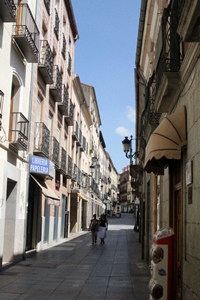
Narrow Street Med Lrg Xlg |
We found a small shopping area with some restaurants, and selected one for lunch. After eating, we continued past the cathedral and out of the walled part of the city and headed back toward the bus stop where we’d been dropped off.
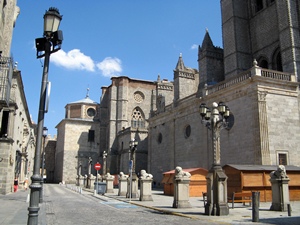
Plaza Catedral Med Lrg |
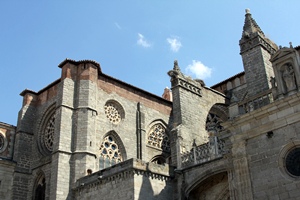
Cathedral Med Lrg Xlg |
On reaching the bus stop we determined that we had some time to visit the San Vicente Basilica across the street. Not very much time, though. We walked over and paid the inexpensive entry fee and discovered that photography was not a problem.
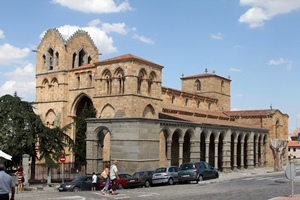
Basilica de San Vicente Med Lrg Xlg |
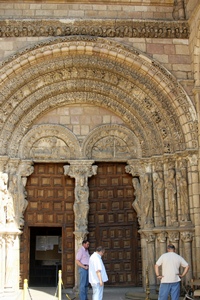
Basilica Doorway Med Lrg Xlg |
We gave ourselves a hasty tour, photographing anything that looked remotely interesting, but not being quite sure what any of it was. Later we found out that the church was built starting in the 12th Century (and ending in the 14th Century) on the traditional site of the martyrdom of St. Vincent and his sisters Sabina and Cristeta at the hands of the Romans. The church is Romanesque in style and holds the tomb of St. Vincent, decorated with scenes of the martyrdom.
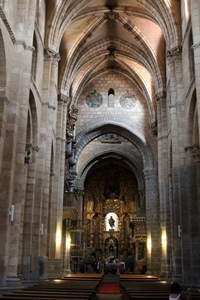
Nave Med Lrg Xlg |
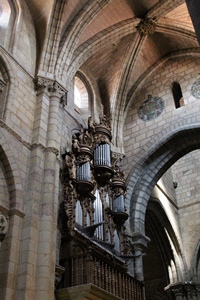
Organ Med Lrg Xlg |
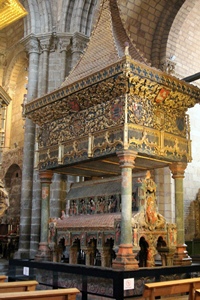
Cenotaph of Sts. Vincent, Sabina and Cristeta Med Lrg Xlg |
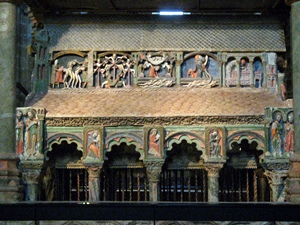
Cenotaph of Sts. Vincent, Sabina and Cristeta Med Lrg |
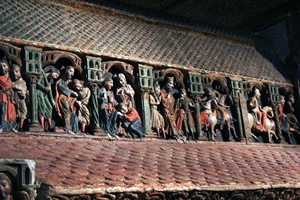
Cenotaph of Sts. Vincent, Sabina and Cristeta Med Lrg Xlg |
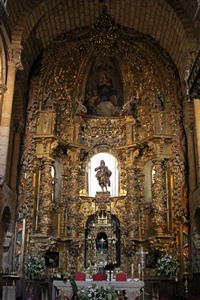
Main Altar Med Lrg Xlg |
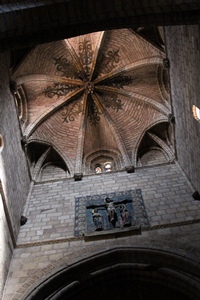
Dome Med Lrg Xlg |
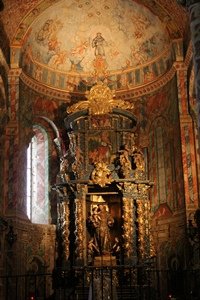
Chapel Med Lrg Xlg |
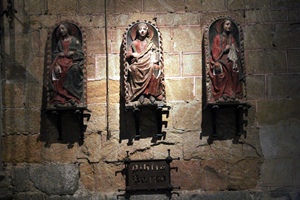
Figures of Sts. Vincent, Sabina and Cristeta Med Lrg Xlg |
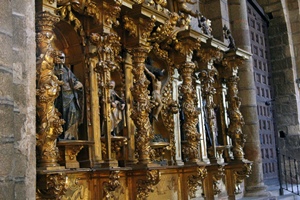
Elaborate Altarpiece Med Lrg Xlg |
We returned to the bus stop in time for our trip back to the train station, where we caught our train back to Madrid. We found a promising restaurant and had dinner. Nella wasn’t too hungry, so she had “just a salad”.
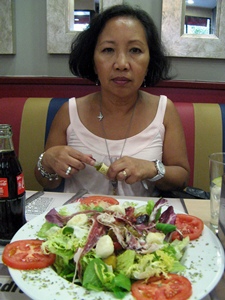
Nella and Salad Med Lrg |
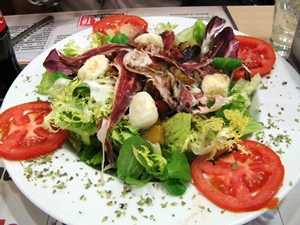
Nella's Dinner Salad Med Lrg |
With this being our last evening in Madrid, we wandered around for awhile, looking into shop windows and comingling with the crowds. We eventually found our way into a Museo del Jamón (Museum of Ham), just to see what all the fuss was about.
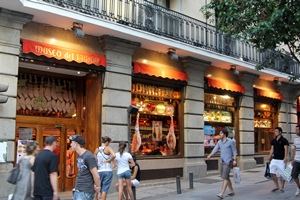
Museo del Jamón Med Lrg Xlg |
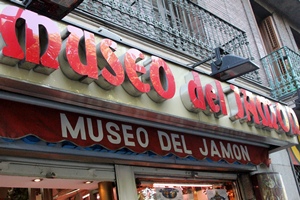
Museo del Jamón Med Lrg Xlg |
Museo del Jamón, and other similarly themed restaurants (Paraiso del Jamón, Palacio del Jamón) embody the deep regard Spaniards have for cured meat of pig, and their discriminating tastes when it comes to same. When entering a Museo del Jamón, one can’t help but be struck (almost in the face) by long rows of ham legs, hanging from racks. Each leg has a tag hanging from it, indicating its type and quality. Apparently one looks for a black toenail, as this indicates the leg in question belonged to a black Iberian pig, the source of prized jamón ibérico. The best pigs are pure black Iberians which have been allowed to roam free. During the last part of their lives they are fed acorns, and after slaughter they are cured for three years or more. The result is ham which is deep in color and rich in monounsaturated fat. It can cost upwards of $100 a pound, and is served in very thin slices.
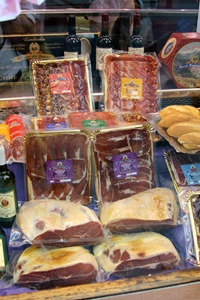
Packaged Jamón Med Lrg Xlg |
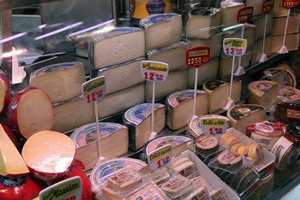
Quesos Med Lrg Xlg |
We weren’t hungry, having just eaten, and besides the place was really crowded, so we didn’t get a chance to taste the ham. We took some pictures and headed back to the hotel. We needed to pack, as we were catching a plane the next morning for a flight to the last city on this trip, Barcelona.
